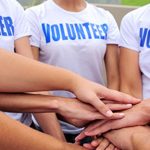
Kids who devote some of their free time to volunteer work may not only help others, but also themselves. That’s according to a new study that found U.S. kids who spend time in community service are often thriving, physically and mentally. Overall, kids who’d volunteered in the past year were in better physical health, had a more positive outlook on life, and were less likely to have anxiety, depression or behavioral problems than their peers who did not do volunteer work. The findings, published May 30 in the journal JAMA Network Open, do not answer the chicken-and-egg question, researchers noted: Kids who were already high on the well-being scale may have been more apt to volunteer. “We can’t say this is cause-and-effect,” said lead researcher Kevin Lanza, an assistant professor at UTHealth Houston School of Public Health. That said, Lanza thinks the findings set the stage for a study that follows kids over time, to see whether volunteerism promotes better physical and mental well-being down the road. There are, of course, already plenty of reasons to encourage volunteerism, Lanza pointed out. But if it also benefits young volunteers’ well-being, then it would be a “win-win,” he said. “There could be a great opportunity to promote volunteering as a public health measure,” Lanza said. Many studies over the years have linked volunteerism to better physical and… read on > read on >


























-300x200.jpg)










